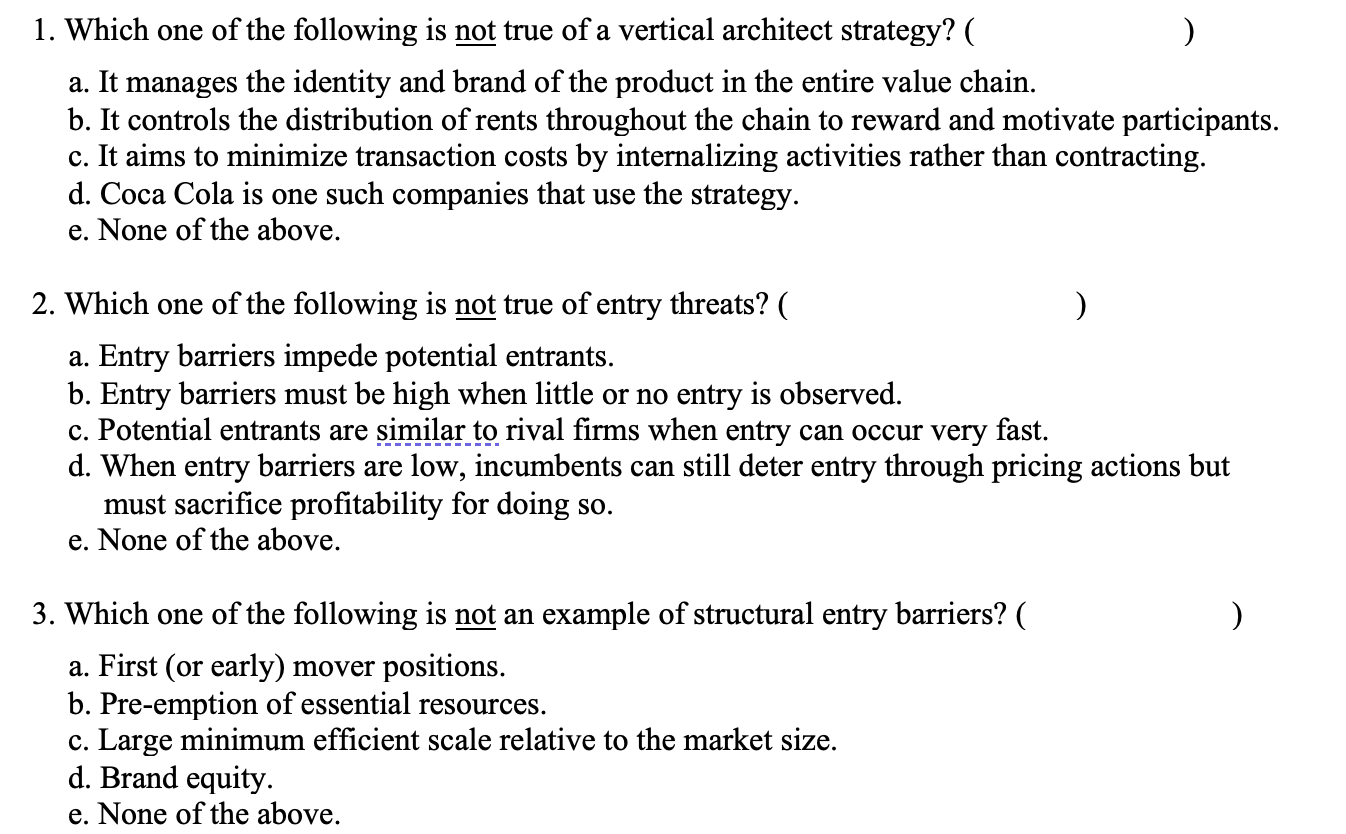
1. Which one of the following is not true of a vertical architect strategy? ( ) a. It manages the identity and brand of the product in the entire value chain. b. It controls the distribution of rents throughout the chain to reward and motivate participants. c. It aims to minimize transaction costs by internalizing activities rather than contracting. d. Coca Cola is one such companies that use the strategy. e. None of the above. 2. Which one of the following is not true of entry threats? ( ) a. Entry barriers impede potential entrants. b. Entry barriers must be high when little or no entry is observed. c. Potential entrants are similar to rival firms when entry can occur very fast. d. When entry barriers are low, incumbents can still deter entry through pricing actions but must sacrifice profitability for doing so. e. None of the above. ) 3. Which one of the following is not an example of structural entry barriers? ( a. First (or early) mover positions. b. Pre-emption of essential resources. c. Large minimum efficient scale relative to the market size. d. Brand equity. e. None of the above. 1. Which one of the following is not true of a vertical architect strategy? ( ) a. It manages the identity and brand of the product in the entire value chain. b. It controls the distribution of rents throughout the chain to reward and motivate participants. c. It aims to minimize transaction costs by internalizing activities rather than contracting. d. Coca Cola is one such companies that use the strategy. e. None of the above. 2. Which one of the following is not true of entry threats? ( ) a. Entry barriers impede potential entrants. b. Entry barriers must be high when little or no entry is observed. c. Potential entrants are similar to rival firms when entry can occur very fast. d. When entry barriers are low, incumbents can still deter entry through pricing actions but must sacrifice profitability for doing so. e. None of the above. ) 3. Which one of the following is not an example of structural entry barriers? ( a. First (or early) mover positions. b. Pre-emption of essential resources. c. Large minimum efficient scale relative to the market size. d. Brand equity. e. None of the above







